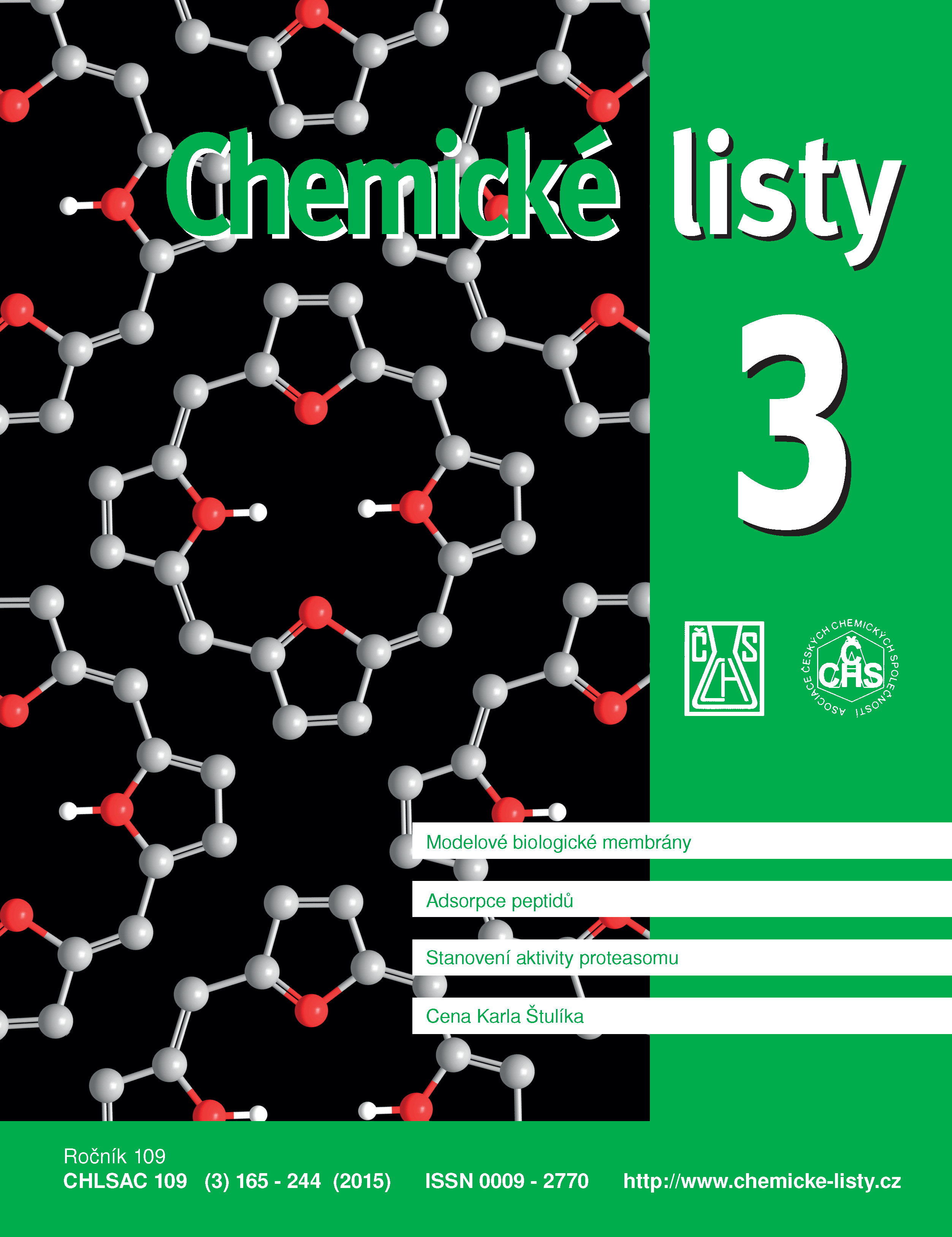Voltametrické stanovení anthracenu pomocí elektrody ze skelného uhlíku modifikované deoxyribonukleovou kyselinou
Klíčová slova:
polycyklické aromatické uhlovodíky, anthracen, DNA biosenzor, diferenční pulzní voltametrie, kontaminace pedosféry, modelové vzorky štěrku a pískuAbstrakt
Polycyclic aromatic hydrocarbons are an important class of compounds ubiquitous in both the living and working environment. Since they are proven carcinogens and/or mutagens, the development of highly sensitive analytical methods for their determination is among the most demanding tasks in environmental analysis nowadays. A simple electrochemical biosensor (DNA/GCE), based on a glassy carbon electrode (GCE) and low molecular weight double-stranded DNA from salmon sperm immobilized onto the electrode surface, was used in this study for the development of a differential pulse voltammetric method for sensitive determination of a representative of polycyclic aromatic hydrocarbons – anthracene. The spontaneous accumulation of anthracene into the DNA structure (intercalation between the double-stranded DNA base pairs) was used to increase the sensitivity of the determination. The influence of pH on electrochemical behavior of anthracene was investigated at the bare GCE in buffered ethanolic–aqueous solutions. The optimal medium found was ethanol – 0.04 mol l–1 Britton-Robinson buffer pH 5.0 (1:1, v/v), which was also used for the subsequent determination of anthracene at the DNA/GCE, with an analyte accumulation time of 5 min. The limit of quantification (LQ) of anthracene at the bare GCE was 2.2 μmol l–1, while the LQ of 0.15 μmol l–1 was reached at the DNA/GCE. Moreover, the applicability of the newly developed sensitive voltammetric method was successfully verified on model samples of gravel and sand, with the added/found recoveries of 98 % and 96 %, respectively.





